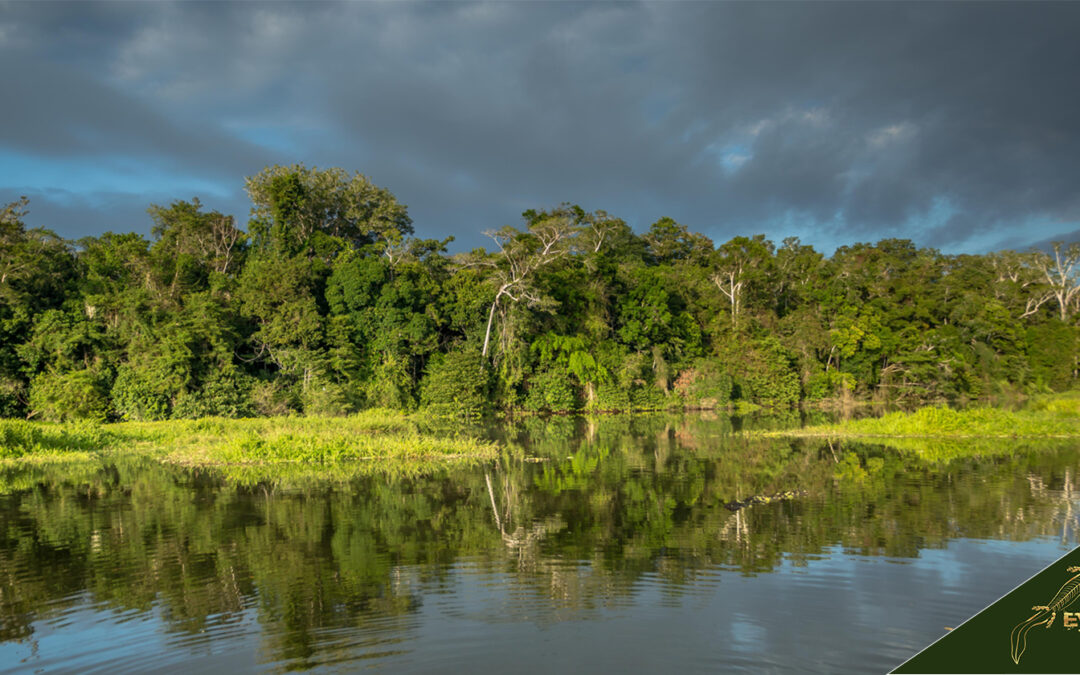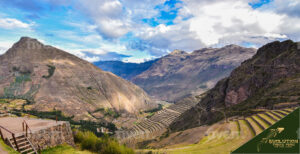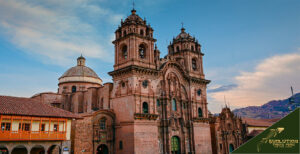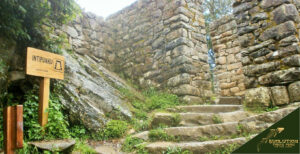The Manu National Park contains the most biologically diverse area in the world. It is located in the Southeastern area of Peru. The place is home to countless animals and plants. It is a home for various indigenous settlers. It is one of the world’s protected gems that contain the most distinct and diverse ecosystems. The coordinates of the park are 12.0406° S and 71.7230° W. The elevation of its highland reaches 4,000 m above sea level.
The lowland elevation of the park is 300 m above sea level. The park was established through an agreement made between the Peruvian government and other American countries. The park aims to promote the protection and conservation of the rich collections of fauna and flora in the area.
The agreement to establish the site was made during the year 1967. The agreement specifies the scope of the area that covers almost half of the land area of Peru. The total size of the area of Manu is 1,881,200 hectares. The entire site is considered a Biosphere Reserve. The park is part of the Manu Biosphere Reserve which is composed of Manu National Park, Manu Reserved Zone, and Manu Cultural Zone.
Manu National Park houses natural flora and fauna. The government and its people intend to protect and maintain the natural and distinct characteristics of the site. The Manu Reserved Zone is a zone intended for research and tourism. The area showcases the magnificent beauty of the park. The Manu Cultural Zone is an area for the settlement of indigenous communities. The division of the area is to properly protect and preserve resources. The conservation efforts maintain the life of every species in the park.
There are two seasons in Peru, either dry or wet season. The dry season happens during the summertime. It is ideal for tourists to visit the Manu National Park. The dry season occurs from the months of April to November. The wet season happens from February to March. The wet season occurs during the wintertime. The climate in the park could go low by 8° C. The climate at the site is typically rainy. The precipitations of the area are dependent on the altitude.
The highest recorded altitude in the south of the park is 1,500 to 2,000 mm per year. The altitude in the northwest reaches 8,000 mm. During summertime, the usually recorded temperature is 25.6°C. A number of 2,500 tourists annually visit the area of Manu. Tropical Forest Biome is the classification of the geographic profile of the area. It is considered a forest Biome since its composition is a habitat on the land full of trees, plants, animals, and other organisms that are residing within the site.
The park has an extreme variety of altitudes, microclimates, soils, and other ecological conditions. The various ecological conditions resulted in a complex composition of mosaic habitats and niches. The park was invaded by two civilizations of, the Inca Empire and the Spanish conquerors. The civilization influenced the economy of Manu which started with the trade of rubber plants.
The heated rubber saps are formulated with sulfur to create a commercially viable rubber. Both civilizations influenced the culture and heritage of Peru, especially the indigenous communities living in the park. There are 8 licensed tour operators going to Manu. The tour operators help the tourists to have a successful journey to the Manu National Park.

What is the Manu National Park History?
The Manu National Park is an area in the Southeastern part of Peru. It is part of the Manu Biosphere Reserve. The reserve is divided into three zones namely Manu National Park, Reserved Zone, and Cultural Zone. The Manu National Park is known to have multiple foreign arrivals. The place was inhabited by the ancient Inca Empire, specifically the Inca Pachacutec and Tupac Inca Yupanqui. The area was invaded by the Spaniards in March 1567.
The Spaniards founded Paucartambo which was used to establish farms and own parcels of land. Spaniards prompted the construction of bridges that helps to facilitate the trade of products. The products being traded are coca, sugar, cotton, pepper, and wood. Expeditions are made within the roads going to Manu. The expeditions are done by Spanish conquerors Juan Alvarez Maldonado, Manual Escobar, and Colonel Faustino Maldonado. 30 years after Spaniard’s expedition, Charles Goodyear and Carlos Fitzgerald made some discoveries and business on rubber trees.
The rubber trees were abundant during the early years of the park. It was flourishing with rubber trees with less to no other useful purpose. The discovery of a heat-resistant rubber was made by Charles Goodyear. Goodyear mixed the heated rubber sap with sulfur to create a commercially viable rubber. In the 1900s, the trade of rubber that reached 27,000 tons per transaction are facilitated by Carlos Fitzgerald. Fitzgerald made a crossing of division between Upper Mishagua and Upper Manu. The creation of the divide helps to easily transport trees.
The divide was now called Fitzgerald Pass. The park was created due to an agreement made between the Peruvian government and other American countries. The agreement to preserve life within the park was signed in 1967. The agreement specifies the preservation of the flora and fauna and the various range of animals, including birds. The area was promoted as a National Reserve in 1968. It was declared a UNESCO World Heritage Site after five years. Its declaration happened on May 29, 1973. The park covers the whole Manu River basin.
There are around 2,000 to 5,000 species of plants and 250 types of trees. The park includes distinct and rare species of animals. The distinct species are giant armadillo, jaguars, giant otter, puma, and the Andean mountain cat. The park is important to the history of Latin America since it contains and protects the wide collection of flora and fauna in the world. The book Peru’s Amazonian Eden: Manu National Park and Biosphere Reserve talk about the wonders of the site. It highlights information about the plants and animals in the area.
What does Manu National Park Mean?
The term Manu means man or mankind. The term refers to a human or a title given to the king of the earth. In Quechua language, manu means man. The Manu National Park is home to various plant and animal life. It is home to multiple indigenous settlers even before the Spanish and Inca Empire conquerors.
What are the theories about the origin of the Manu National Park?
Listed below are the theories about the origin of the Manu National Park.
- The area is the home of various indigenous communities: The park is said to be the homeland of various indigenous communities. The communities include the civilization of Matsigenka or Machiguenga. The Machiguenga are the indigenous people living in the Amazon Basin. The population of the community is estimated at 7,700. The inhabitant’s work is usually hunting and fishing. The people mostly practice slash and burn agriculture. The communities pose a threat to biodiversity, which are then encouraged to settle outside of the area.
- The variations in the number of species present in the area: According to the records presented by different sources. One source talks about the approximate number of species that is said to have 200 species of mammals in the year 2001. In 2006, the number of species of mammals is said to be 222. There are said to be 800 species of bird in the year 1989. The number of species is estimated to be 1,005 during the year 2006.

What are the myths about Manu National Park?
Listed below are the myths about Manu National Park.
- Myth #1: The area has the greatest terrestrial species diversity in the world.
- Myth #2: The place has multiple indigenous settlers before its discovery.
- Myth #3: The area in Manu is believed to have the Païtiti or the lost city of the Inca Empire.
How is Manu National Park formed?
The Manu National Park was formed through an agreement made between the Peruvian government and other American countries. The establishment of the national park is to preserve the area of Manu. The area intends to preserve the rich collection of plants and animal life.
The agreement specifies that the park’s area covers beyond half of the country. The park’s agreement contains restrictions on hunters, lumbers, or colonists. The virgin state of the area should be maintained. It should be free from inhabitants and other factors that could affect the preservation of the park.
The settlers of the area are advised to leave the park to prevent the threats of damage to the area. The area is where Charles Goodyear discovered the presence of rubber. Goodyear has used heated rubber sap mixed with sulfur to create a heat-resistant rubber. The rubber industry was in booming demand to create commercially viable rubber. The demand for rubber lasts until 1900. In the same year 1900, the exports of rubber reached 27,000 tons.
The presence of other competitors in Asia and deforestation ended the demand in 1914. Glenn Shepard Jr. created a film from the discoveries made in the area. The studies made are for ethnobotanical and anthropological research. The study lasted for 18 months from 1995-1997. The discoveries of the researcher were presented in two films. The films are entitled “The Spirit Hunters” and “Spirits of the Rainforest”.
Manu was declared a National Reserve in the year 1968. The area was then declared a National Park after 5 years. The Peruvian government including the international parties help to preserve the wonders and beauty of the park.
Is Manu National Park Important for Peru History?
Yes, Manu National Park is important for the history of Peru. The park covers more than half of the area of the country. The park is home to multiple animals and plants. It contains a variety of ecosystems. It was the home to multiple indigenous settlers of Peru. The settlers have shaped most of the country’s culture and heritage.
The 3 unique sides of Manu National Park are its vegetation, fauna, and physical features. The park has a distinct altitude, climate, soil, and a wide range of vegetation. The land’s vegetation is estimated at 2,000 to 5,000 species. Some flora is still incompletely known up until today. The information gathered is mostly from the lowland of the park.
There are three types of vegetation namely barren puna, the cloud forest, and humid subtropical forests. The barren puna is a grassland above 3, 200 meters. The cloud forest provides shade covering 1,800 meters of the area. The humidity runs from humid to extremely humid in subtropical forests and humid lowland rainforests. The park contains various fauna.
The park has various animals that range from mammals up to bird species. The mammals are recorded to be 200 species, which consists of 5% world’s animal population. There are 13 types of monkeys and 100 types of bats present in the area. It includes 20 species of opossums, 7 even-toed ungulates, and 5 sloths and anteaters. The area has 1,005 species of birds in the area, which make up 10% of the world’s bird population.
There are 68 reptiles, which are mostly black caiman and yellow-spotted river turtles. The fauna record of the park increases as time goes by. The physical features of the area are distinct from other areas in Peru. The area settles along the eastern slopes of the Andes mountains. It protects the whole watershed of Rio Manú and most bank tributaries of Rio Alto Madre de Dios.
The land area of the park is almost half of Belgium. The area is the same size as the state of Hawaii. The area is 4,000 m on the Paucartambo mountains that extend up to the flat alluvial plains of the Amazon basin.
Is Manu National Park safe?
Yes, Manu National Park is safe. The park provides a decent site viewing of the animal and plant life of the area. The place is divided into three zones to provide a careful and safe expedition of the park. One of the zones is the “core zone” which is for researchers and scientists. The “reserved zone” provides limited access to tourist guides and visitors. The “cultural zone” is the area where the Amazonian tribes live.
Where is Manu National Park Located?
Manu National Park is situated in the regions of Madre de Dios and Cusco. The park is in Manu Biosphere Reserve in the country of Peru. The site has a great number of diverse ecosystems located in Southeastern, Peru. The area of the site is 17,163 km², spanning the Andean highlands.
It has magnificent lowland rainforests, cloud forests, and Andean grasslands. The area is established through a 1963 agreement made by the Peruvian government and other American countries. Its location is the meeting point of the Amazon Basin and Tropical Andes. Its total size is 1,881,200 hectares, which is almost half of the country’s area.
What are the coordinates of Manu National Park?
The coordinates of Manu National Park are 12.0406° S and 71.7230° W. The elevation of its highlands in the park reaches 4,000 m above sea level. The lowlands of the park reach 300 m above sea level. It is situated in the Southeastern part of Peru. It is the meeting point of the Tropical Andes and Amazon Basin. The area has majestic cloud forests and lowland jungles. It is 1.7 million hectares that contain 850 types of species.
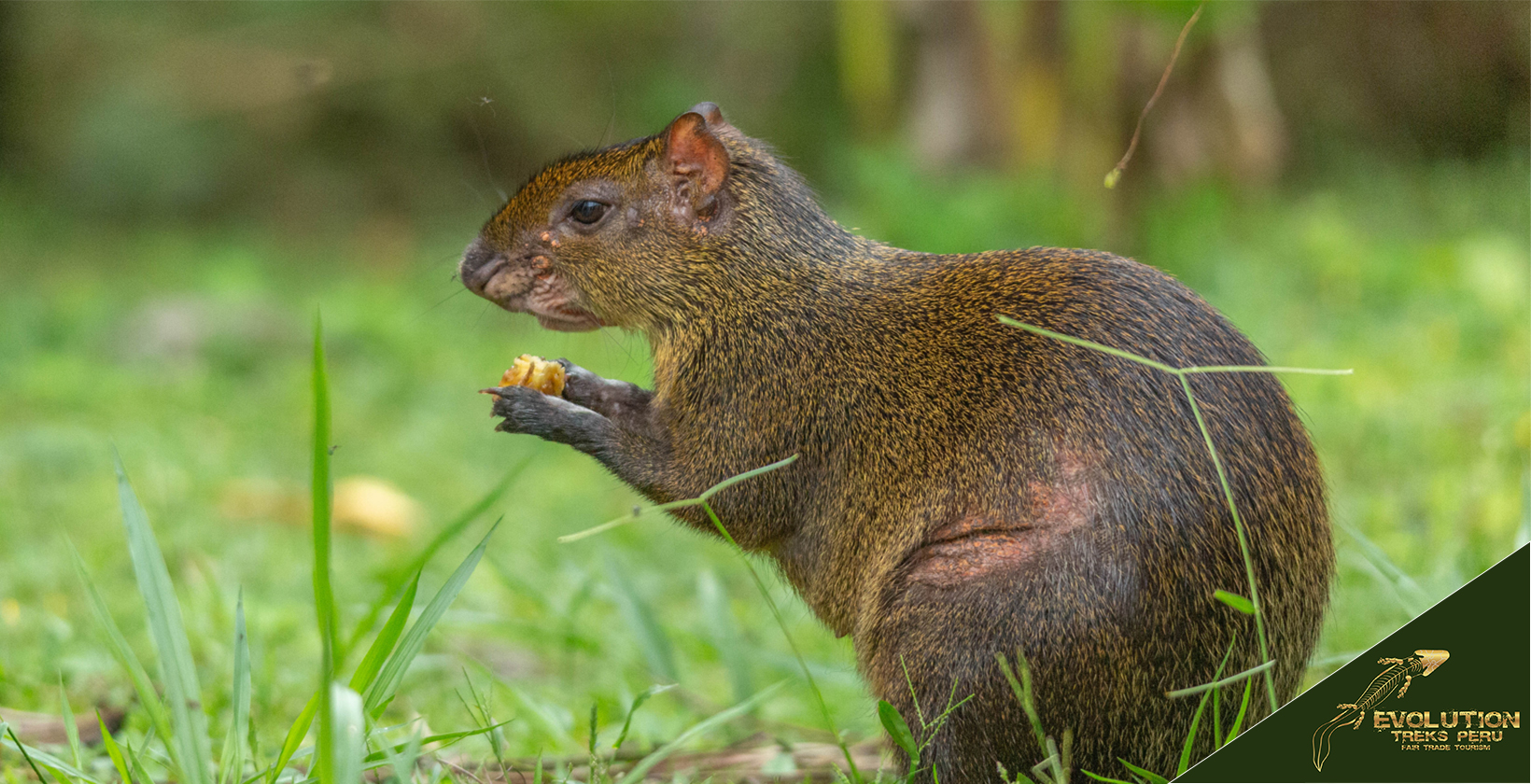
What are the Tours for Manu National Park?
There are 8 licensed tour operators leading to Manu National Park. Tourist enjoys the jungle tour for 3 days. The tour costs up to $390 USD for adults. The visitors are taken to the beaten path and challenging trails to experience and see the rich wildlife of the area.
One can opt for a 4 day to the Manu National Park. The tour costs $390 USD for adults. It is an ecological tour dedicated to presenting the tourist to appreciate the flora and fauna of the site. It is one of the top Manu National Park tours that tourists can enjoy. There is a 4 days and 3 nights tour that costs $470 USD.
The tour is about the rainforest expedition and the tour of the nearby tourist attractions of Peru. A family has an option to take the Cusco and Manu tour costs $1,100 USD. The 8-day trip is a tour within the city of Cusco and the Amazon. The visitors have to experience the trip that involves the rich history of the Inca Empire and Spanish conquerors.
An individual witnesses majestic views of the architectural site of the Inca civilization and the amazing wildlife of the park. One should organize a trip to a licensed tour operator. Tour operators take visitors in a group to the park. It is not possible for tourists to go to the park on walking. One should take a bus or plane to arrive at the destination.
What are the Best Things to do in Manu National Park?
Listed below are the best things to do in Manu National Park.
- One should take a walk during nighttime: Walking during the night is a good experience to witness the nocturnal animals in the park. There are multiple insects and amphibians to catch during the night.
- One should visit Lake Salvador and Lake Otorongo: An individual can visit the lakes of Salvador and Otorongo. Lake Salvador is home to multiple animals, especially birds. There are monkeys, caiman, capybara, and river turtles to spot in the area. Lake Otorongo is home to a wide range of wild plants and animals. The lake has a constructed tower best to spot different animals.
- Witness various fauna: One witnessed various fauna present in the park. One explores the park, seeing a giant otter that can grow up to 1.8 cm. There are different groups of animals living in their natural habitat. Tourists witness the animal’s way of hunting, eating, and playing together with its kind.
- Viewing of the cock-of-the-rock bird: The cock-of-the-rock bird is the national bird of Peru. The bird has an attractive bright red color. One can witness the bird when going to the cloud forest of the park.
- Sightseeing of macaws: A sightseeing of the macaws is available for the tourists to enjoy. There are various types of macaws present in the area. It is accessed through the clay licks of the area.
- Visit the indigenous communities: One can visit the indigenous communities of the Manu National Park. One can travel to Palotoa- Teparo which is an indigenous community. It is a Matsiguenka indigenous community in Manu. Tourists can stay at the Pusharo Lodge.
- One should do a canopy walk: One can do a canopy walk to see the jungle from a different view. The walk would give a deeper and more meaningful understanding of the life of the trees.
- One can do camping in the jungle: One can do camping within the jungle. The camp gives an experience of the darkness and animal sounds at night.
- One should do a river tour: One can do a river tour within the park to appreciate the national park. The river tour provides a beautiful view of the park during sunset.
- White water rafting: One can experience the white water rafting adventure in the park. It can be experienced near Pilcopata which is one of the best things to do in Manu National Park.
What is the best season for visiting Manu National Park?
The dry season is the best season to visit the Manu National Park. There are two types of seasons in Peru. The seasons in Peru are summer and winter season. Summer runs from December to March. The months of April to November are the ideal time to visit the park. The season spectacularly presents the park to the tourists.
Winter is from May to September. The heavy rains usually occur from February to March. The rains cause slippery and flooded roads leading to the park. The heavy rain season should be avoided by tourists to enjoy the scenic view and wildlife of the park. The climate around the national park can go below 8° C.

What are the Hiking Routes for Manu National Park?
There are three main hiking routes for Manu National park, these include the Mirador de Tres Cruces to Santa Isabel, the Mountain bike between Pillahuata and Santa Isabel, and the Observation tower to Manu River. The Mirador de Tres Cruces to Santa Isabel route is 63.1 km. The route provides a point-to-point challenging route. The route is located near Kosñipata, Cusco.
The trail consumes 22 hours and 34 minutes to be finished. It is great for outdoor activities such as camping, hiking, and backpacking. The route from Mirador de Tres Cruces to Santa Isabel takes 26.9 km poin-to-point trail. It is a moderately challenging route for individuals who are considering mountain biking.
The trail takes 7 hours to 52 minutes to finish. The elevation gain of the route is 1, 013 meters. Using the route from the Observation Tower to Manu River takes 2 hours and 19 minutes. It is a 9.7 km out-and-back trail near the Fitzcarrald, Madre de Dios. The elevation gain from the trail is 177 meters. It is a moderately challenging trail great for a hiking activity.
How many miles is the Manu National Park?
The Manu National Park is 5,918.17 mi. The park has multiple trails to do outdoor activities such as hiking, mountain biking, and camping. One enjoys a moderate to difficult trek experience around the trails of Manu. The park has at least four trails to enjoy by visitors. One should organize the trip with various licensed tour operators. The tour operators help the tourists secure permits and other necessities to access the park.
What are the Closest Destinations to Manu National Park?
There are three closest destinations to Manu National Park. The closest destinations are the city of Cusco, the Biosphere Reserve, and Puerto Maldonado. One is the access to the city of Cusco. Its distance to the park is estimated at 129 km. One arrives at the park at a duration of 2 hours and 9 minutes by bus. Cusco is the near Urubamba Valley in Southeastern, Peru.
It is the main city where the Inca Empire resides. The empire influenced mostly the architectural designs, customs, and culture of the people in the city. The city was declared a UNESCO World Heritage in 1983 since it houses the remnants of the Inca Empire. The city is elevated at around 3,400 meters. The tourists can access the city before going to Manu. In Cusco, there are multiple transport systems to help tourists arrive at their destination.
The park is part of the Biosphere Reserve. It is said to be the learning place for sustainable development. It is the testing site for interdisciplinary approaches to understanding and handling the changes in social and ecological system interactions. It is established by countries and reorganized by UNESCO.
The area intends to protect and preserve the flora and fauna of the park. Puerto Maldonado is located between the Tambopata and Madre de Dios rivers. Its distance is 289 km away from the park. It is the entrance to Tambopata Reserve and the Manu National Park. The area is the capital city of Madre de Dios. It is 55 km west of the Bolivian borders.
How to Get from Cusco to Manu National Park?
Listed below is the instruction to get from Cusco to Manu National Park.
- Take a ride from Cusco: A bus or car ride from the town of Cusco to Atalaya. The travel to Atalaya uses the highway of Cusco-Paucartambo. The travel takes 280 km with a time estimation of 12 hours car ride.
- One can opt for a plane ride to Manu: An individual takes a plane ride from Cusco. It takes 40 to 45 minutes to arrive at the lowland jungle of the park.
- Traverse from Atalaya to Boca Manu: An individual traverse the area from Atalaya to the village of Boca Manu. The Boca Manu is known for having the best of the region’s riverboats. It takes another 12 hours boat ride to reach Madre de Dios.
- From Madre de Dios to the National Park: To enter the park, one has to take the route in Madre de Dios. The Madre de Dios is 167 km away from the park.
What to know before going Manu National Park?
Listed below are the things to know before going to Manu National Park.
- One needs an organized tour to enter the park: One should organize a trip connected to a licensed tour facilitator in the park. There are permits needed to secure entering the park. A legitimate tour guide helps the visitor in achieving a successful trip.
- The travel to Manu National Park starts in the morning: The travel to the Manu National Park starts early in the morning. The travel takes 6 to 8 hours to enter the gate of the park.
- The road going to the park is complex: The road is complex and challenging. The path is usually unpaved and winding. It often crosses peaks with high altitudes. One can take a pill to counteract the sickness from the travel.
- Culture of the people in Manu: One should be aware of the culture of the people in Manu. The indigenous people settling in the area have various cultures and practices. One should note and show respect for the importance of their culture. There are ethnic groups situated in the park. The Yine ethnic group offers paintings of their ancient symbols.
- One should bring a repellent and sunblock: One should bring sunblock to help protect the skin from the sunlight. A mosquito repellent is needed for the trip since there are a lot of mosquitos around the area. A repellent is a must-have for the Manu National Park trip.
- One should pay attention to the presence of various animals: An individual should be aware of the presence of various animals in the area. There are multiple wild animals living in the park. One should be attentive and respectful of the life that is present around the site.
- Lodges and cabins available in the area: The lodges in the area are mostly managed by ethnic groups. Yine ethnic group managed the lodges near the Manu sanctuary area. Lodges are equipped with personal hygiene and the essentials for visitors. The lodges have charging stations for devices and digital types of equipment.
- A fever shot is needed before the trip: One should take a yellow fever shot 10 days before the trip. There are a lot of recorded cases of individuals bitten by mosquitos. One should note that there are a lot of mosquitos present in the area.
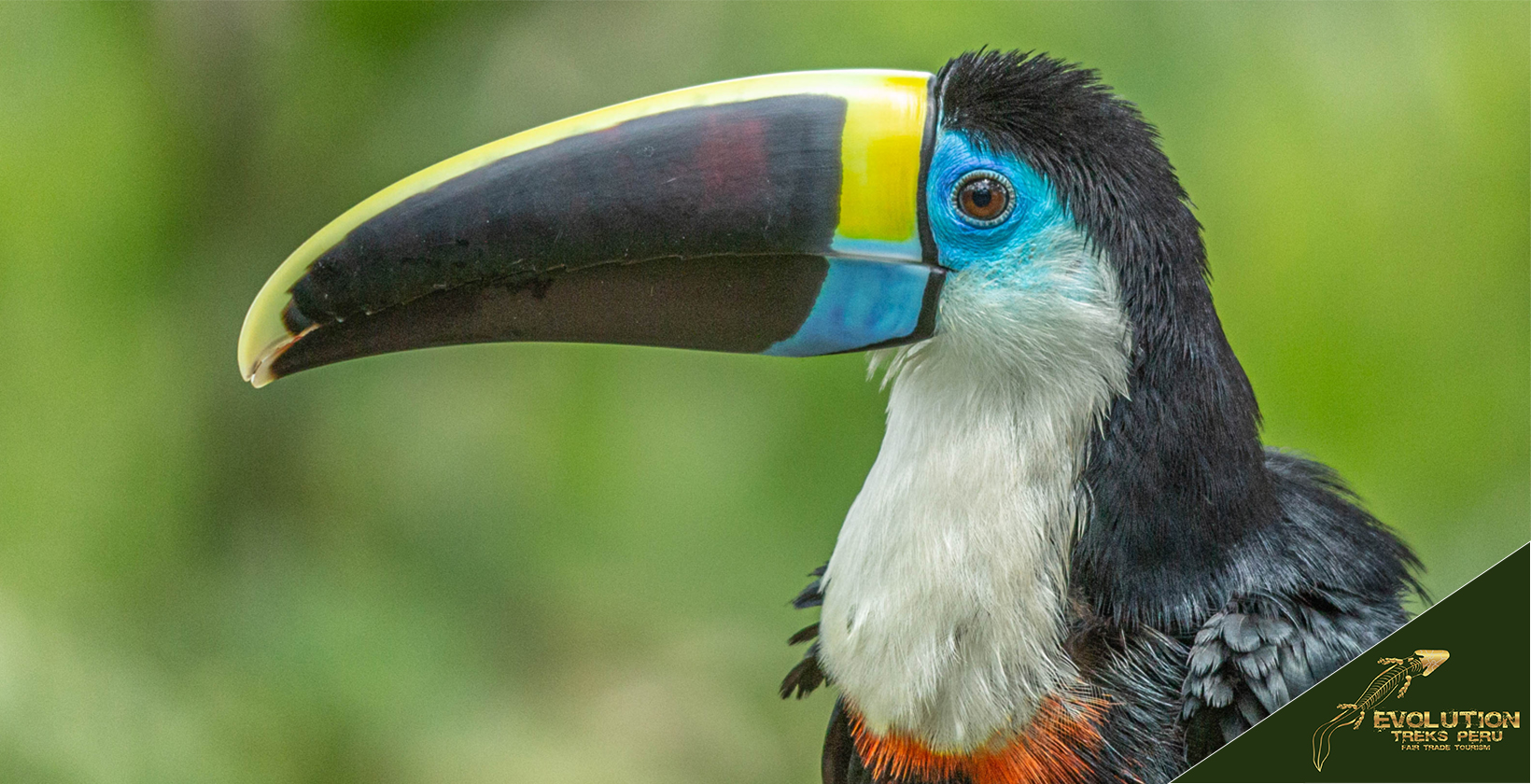
When is Manu National Park Open?
The Manu National Park is open the whole year. Tourists can access the park from 8 licensed tour operators. The tour operators organize the trip of the visitors going to the park. During the heavy rain, one should use a plane ride since most trails are flooded. The heavy rain season falls from February to March. A needed walk to medium distances for about 2 to 3 hours. It is accessed by all age group that is physically fit to travel to the national park. The price of the park’s entrance is $269 USD for adults. A charge of $219 USD for individuals ages 6 to 13. Children ages 5 and below enjoy a free visit to the site.
How is the Manu National Park Itinerary?
The itinerary to Manu National Park takes approximately take 3 to 5 days. The tours in Manu are operated by licensed tour guides. The destination is popular because of the vast wildlife and various ecosystem that existed in the area. The tour guides help to secure the permit to enter the site. The park is close to the city of Cusco, where the tour commences. The famous Cusco Jungle Tour takes 3 days to be completed.
The travel is made possible with a local naturalist in the park. The tour offers closer access to the flora and fauna of the site. The tour presents the life of the Peruvian settlers. The tour highlight the park as one of the largest rainforest in the world. Tourists can either take the road, with a maximum trip for both land and river of 12 hours. One can also opt for a plane ride going to Manu National Park for 40-45 minutes.
How much does it cost to visit Manu National Park?
The tours going to Manu National Park are set by tour operators. All costs are paid in one setting to enjoy the trip going to Manu. The costs of the trip vary per tour operator. One can enjoy either private or group of participants tour to enjoy with other tourists. The private tour can cost $500 USD per adult, which can be enjoyed for 4 days.
A group tour can cost $390 USD per adult, which is good for 4 days. One can access the park through a plane ride, which round trip costs $86 USD to $479 USD. The one-way trip going to the site start as low as $56 USD. The non-stop flight makes the price difference between each plane trip. The ticket fee for the park’s reserved area can cost $889 USD for each individual.
What is the best vehicle for visiting Manu National Park?
The best vehicle for visiting Manu National Park is by plane. The plane ride takes 40-45 minutes from Cusco. The ride can avoid the complex and challenging roads of the road going to Manu. Riding the plane helps to avoid the flooded area during one’s visit during the rainy season. The plane ride is a convenient way to reach the lowlands of the Manu National Park. One can enter the place without taking a 12-hour bus and boat ride. The cost of the plane ride ranges from $86 USD to $479 USD.
How many hours should a person spend in Manu National Park?
One can spend days exploring and experiencing the Manu National Park. One can enjoy a minimum trip of 3 days. One can choose a maximum stay of 10 days on the site. A long journey is experienced by a tourist taking the road heading to Manu. For the first can trip, it takes an estimated time of 8 hours. After the car trip, the boat ride to Boca Manu takes 8 hours to arrive at Madre de Dios. One takes another 6 hours to arrive at the destination.
Is it possible to stay at Manu National Park?
Yes, it is possible to stay at Manu National Park. One can choose from a wide option of lodges in the park. An overnight stay is possible in the area. The accommodations located in the area are usually rustic and functional. Each lodge offers the needed essentials for the tourists. The lodges are usually managed by ethnic groups in the area. The accommodation provides charging stations for its clients. One has options to stay camping in designated areas or stay in nearby lodges.
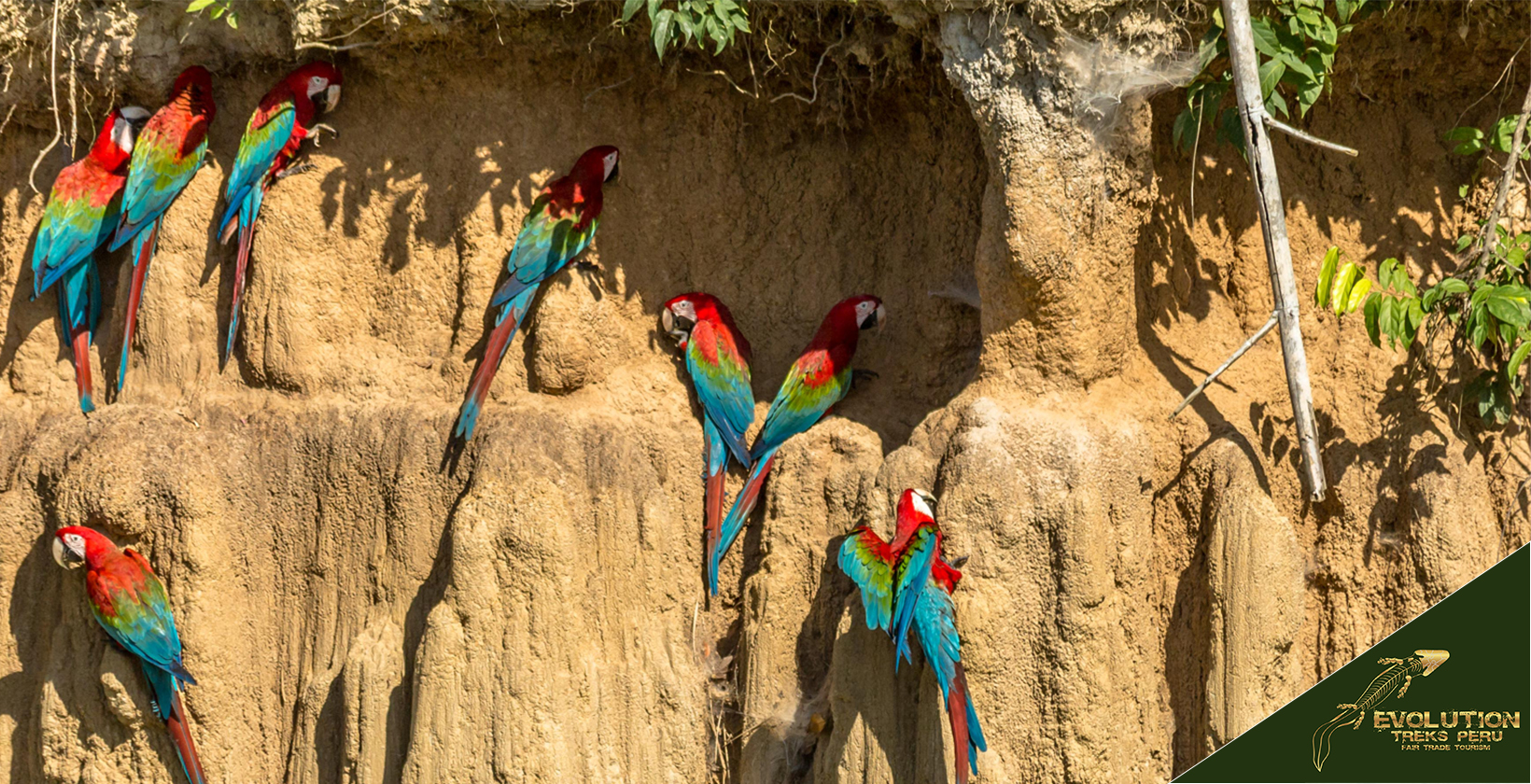
Which Civilization used Manu National Park for what?
There are two civilizations that used the Manu National Park. The civilizations are the Inca Empire and the Spaniard civilization. The Inca Empire civilized mostly the area of Cusco. The empire is the largest empire in the pre-Columbian American era. The civilization started in the highlands of Peru and then started to invade most parts of South, America.
The empire has built architectural sites that are still standing around the city of Cusco. The empire was influential and powerful. The Spaniards conquered most parts of Peru. Their conquest was one of the important campaigns during the Spanish colonization. The conquest lasts up to 1532 to 1572 in Western South America. The civilization influenced the economy of Manu which started with the trade of rubber plants.
The heated rubber saps are formulated with sulfur to create a commercially viable rubber. Both civilizations influenced the culture and heritage of Peru, especially the indigenous communities living in the park.
How is the Geography of Manu National Park?
The Manu National Park is situated in Southeastern, Peru. It is located along the Andes mountains. The area of the park covers 1,716,295 hectares. The park is 70 km directly to Cusco, covering most of the Manu River that extends to the crest of Cordillera de Carabaya. The coordinates of the area are between 71°10’ to 72°22’W and 11°17’ to 13°11’ S. The park is home to 25,000 rare and endemic species.
The park is situated along the Andes mountains. The park is situated on the river of Palotoa. It is a tributary of the Madre de Dios River on the site of Manu National Park. The site protects the Amazon rainforest that runs along the high Andean forests.
What is the Geological Profile of Manu National Park?
The geological profile of Manu National Park consists of lowland forest, cloud forest, and Andean grassland. The lowland forest of the park is 40% of the site. The cloud forest in the valley is elevated at 2,950 meters. The Andean grassland of the park is 70 km directly from the city of Cusco. It has rich vegetation that is estimated to have 2,000 to 5,000 species of plants.
The park is 1,716, 295 hectares that span the Southern area of Peru. The park is considered a tropical forest Biome. Forest Biome means a habitat on land that is dominated by trees, plants, animals, and other organisms. The site is biologically diverse with various ecosystems and distinct wildlife.
What are the findings in Manu National Park?
There are three findings in Manu National Park. The findings in the park are the indigenous settlers, the large and distinct ecosystem, and the various plants and animal species. There were various indigenous settlers in Manu. One of the settlers of the area is the Machiguenga indigenous community. The Machiguenga are the indigenous individuals settling in the Amazon basin jungle.
The population of Machiguenga reaches 7,700 people. The Machiguenga can farm and hunt around the area. The indigenous people have the right to enjoy the area to satisfy personal needs without causing harm to the site. The large and distinct ecosystem is composed of lowland rainforests, cloud forests, and Andean grassland. It reaches up to 4,000 meters of elevation to the Amazon Basin.
There are approximately 1,005 species of birds and 222 mammals in the area of Manu. The birds are 25% of the total world population. The mammals are part of 5% of the total world population. There is an estimation of 2,000 to 5,000 species of plants in the area. The park is rich with a collection of various flora and fauna.
Which city is the closest to Manu National Park?
Cusco is the closest city to Manu National Park. The city of Cusco is elevated 3,400 above sea level. It has a population of 428, 450 people that ranks as the 7th most populous city in Peru. The city has 8 famous streets featured to its visitors.
The streets include Hatunrumiyoc Street, Pantaq Calle, Asnoqch’utun, Atoqsayk’uchi, Pumaqchupan, Ccoricalle Street, K’uichipunku Street, and Choquechaka. The city is the home to the influential Inca Empire. The area is remodelled and redesigned after the pre-Inca civilization process. It has multiple monasteries, temples, and manor houses built by the Inca Empire.
The buildings located around the city prove the presence of the Inca civilization. The Inca Empire buildings located in the city are the Temple of the Sun and the Aqllahuasi are fine structures made by the people of the Inca Empire. The distance between the city to Manu National Park is 127.6 km. It would take 2 hours and 46 minutes to reach the destination.
What are the nearest attractions to Manu National Park?
1. Pantiacolla
The land area of Pantiacolla is also called Paratoari. It is an area formed by pyramid-shaped gland formations. The formations of the land are referred to as truncated ridge spurs. It is formed by sandstone formations appearing to have distinct pyramid shapes. The area has no indications of influence in the ancient civilization. The land is situated at Manu park, southeast of Peru.
The area is said to be a dense tropical rainforest. It was identified and revealed by NASA in 1976. The land has been actively experiencing climate change. The distance between Manu National Park to Pantiacolla is 77.3 km. The Pyramid of Pantiacolla can be reached through a 9-minute bus ride from Cusco. There are three main hotels to stay at near the Pantiacolla. The hotels are Pantiacolla Lodge, Tambo Blanquillo Lodge, and Manu Paradise Lodge.
2. Kosnipata Valley
The Kosnipata Valley is on the Eastern slopes of the Peruvian Andes. It is the Wayqecha Biological Reserve part of Manu National Park in Peru. The valley has a cloud forest that takes 2,950 m in elevation. The name of the valley is derived from the Quechua Indian language “the place with smoke”.
It refers to the clouds hugging the mountain top of the valley. There is a distinct tropical-montane ecosystem around the area. The cloud forest provides a source of clean water in the area of Kosnipata. The distance between Cusco to the Cock of the Rock Lodge is 165 km. The lodge is in the Kosnipata Valley, where its entrance is adjacent to Manu. The lodge provides the greatest view of the valley and the forest of Manu.
3. Bio Manu Expeditions
Bio Manu is located in the South of Manu. It is situated along the Madre de Dios, the area entering the Manu National Park. The expeditions made are through the jungles of the park. Tourists can enjoy and explore the area mostly in the untouched mountains of the park. The expedition enables guarantee to have the best tour operators.
The visitors can be assured to be guided by operators that have deeper knowledge and extensive logistical capabilities of the site. The expedition can enjoy the scenic view of the park and its wildlife. It can allow the tourists to witness the animals in their daily routines and habitats. One can spend 3 nights through the Bio Manu expedition. The trip can be enjoyed by tourists, especially by families.
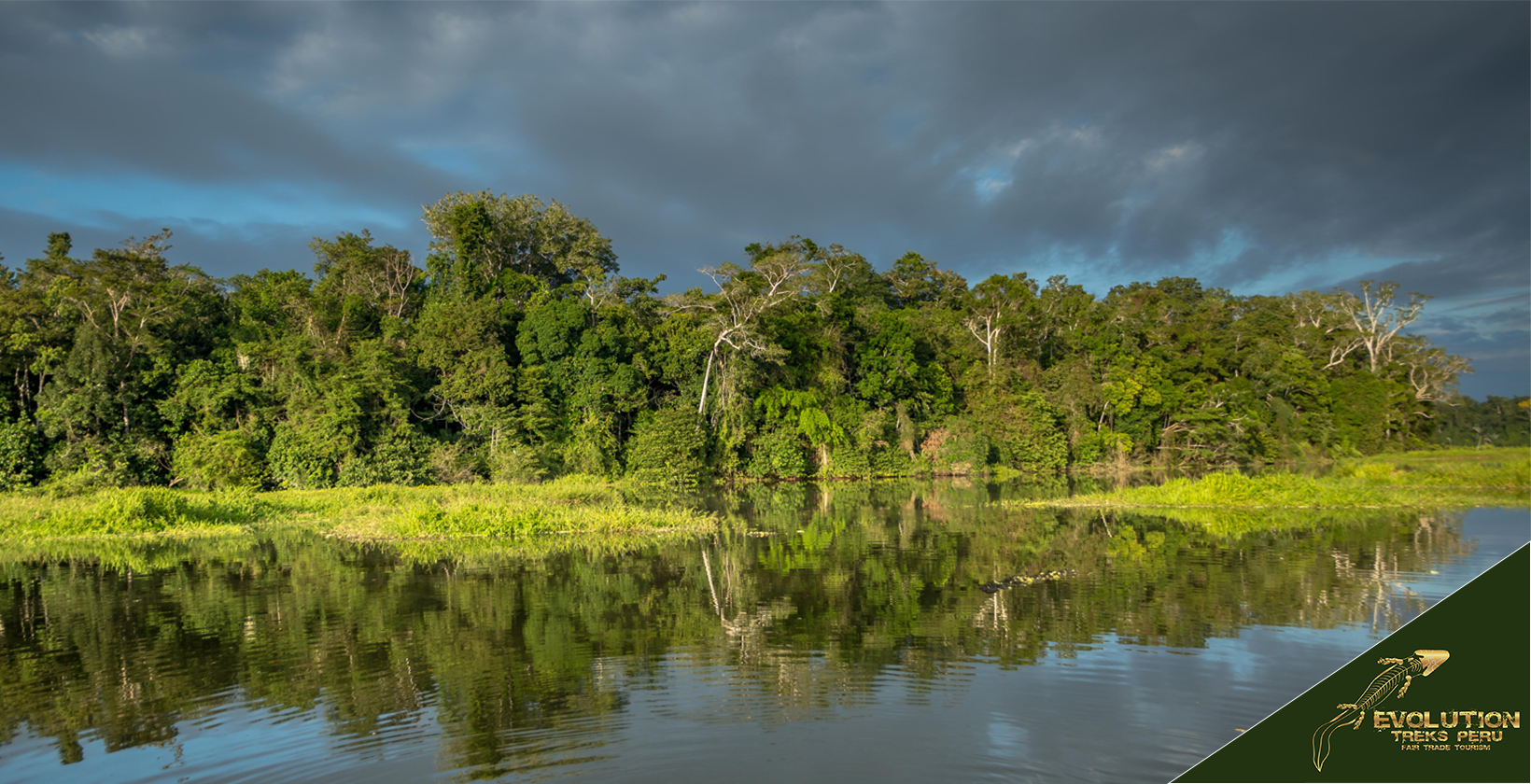
What are the books about Manu National Park?
Listed below are the books about Manu National Park.
- Peru’s Amazonian Eden: Manu National Park and Biosphere Reserve: The book tackles the rich tropical rainforest biosphere reserve in the world. It indicated that the park is located at the tip upper area of the Amazon River. The book determines that the park protects three unique and spectacular ecosystems. The ecosystems are Puna-a high-altitude, cloud forest, and lowland rainforest if the park.
- The Storyteller: It is a novel made by Mario Vargas Llosa. It is about the Machiguenga settlers who have a strong relationship with nature. It narrates the complex cosmogony of the Machiguenga. The complex cosmogony allows them to communicate with all livings in Manu.
Who are the scientists who worked on Manu National Park?
There are four scientists who worked in Manu National Park. The scientists are Glenn Shepard Jr., Charles Goodyear, Patricia Alvarez, and Charles Munn. Glenn Shepard is a film-maker, ethnobotanist, and ethnology curator of the Goeldi Museum.
The ethnobotanist researched and filmed the diverse indigenous settlers of Latin America. The research conducted within the community of Manu lasted for 12 years. The study includes the collection of 2,000 herbarium specimens of plants. It includes a collection of medicinal plants from the Machiguenga settlers. Charles Goodyear is a scientist that worked on the discovery of rubber in the area of Manu.
The scientist is a chemist and manufacturing engineer. The discovery of rubber was from heating rubber sap with sulfur. There was a high demand for rubber trees after its discovery. Patricia Alvarez is a researcher that works on the conservation state and various ecosystems of the park.
The researcher claimed the defining characteristics of the area. The study led to a claim that the park has the greatest terrestrial species diversity in comparison to other emblematic areas. Charles Munn is a zoologist that spent 22 years studying the life of animals in the Manu National Park. Munn specifically studied macaws and conservation-oriented ecotourism.
Which district is Manu National Park in?
The Manu National Park is located in the region of Madre de Dios, under the region of Cusco. The park is situated in the country of Peru. It has 1,716, 295. 22 hectares covering mountains, creeks, and valleys. The park is divided by the government into two zones. The zones are the restricted area and the reserved area. The area contains more than 25,000 rare species.
Is Mount Huascarán close to the Manu National Park?
Yes, Mount Huascarán is close to the Manu National Park. It is approximately 684 km away from the park. The travel time one spends going to the park is 15 hours and 34 minutes. There are 4 ways to go to Manu from Mount Huascarán. One can ride a plane from Cusco airport to Trujillo for around 3 hours and 32 minutes. From Trujillo, one can ride a taxi to go to Huaraz. From there, one can take another bus to travel to Mount Huascarán. There are multiple hotels to stay in the area.
Does Mount Huascarán affect the History of Manu National Park?
Mount Huascarán does not affect the history of Manu National Park. Mount Huascarán is the 4th highest mountain in South America. It is situated in the Cordillera Blanca range of the western Andes. It has taken its name from the Quechua language which means rope. The southern summit of the mountain has an elevation of 6,768 meters which is the highest point in Peru. The northern summit of the mountain reaches 6,654 meters. The trail route of the mountain is not challenging. The challenging aspect is the altitude which requires one’s physical preparedness.
How did Manu National Park Lived in the Past?
The Manu National Park is home to various indigenous settlers. The park has Indian inhabitants that were known as the Incas. The Incas have close contact with the Indians of Manu. It said that the park is the “lost city” of the Inca Empire. There were Spanish conquerors entered the area in 1500 during the powerful Inca Empire civilization.
The Spaniards explored South America and claimed parcels of land and farms for their country. The area trades the rubber trees to other areas of the world. The rubber trees are used to make commercially viable rubber. The indigenous settlers lost their home through illegal logging activities. Most settlers of the land are the Matsigenka indigenous tribe.
How was the economy of Manu National Park?
The Manu National Park has served as a strong foundation for a good economy in Peru. The main economic activity in Peru is agriculture. The agricultural activities are mainly fishing and mining. It is the leading fish source in the world. It supplies bismuth, silver, and copper from its mining activities. The country has struggled to modernize its economy since the country has transitioned its non-traditional ways of trading.
How was Daily Life in Manu National Park?
There are thousands of Matsigenka living around the Manu National Park. Their daily life involves hunting and farming. The people hunt and farm with limitations only for their subsistence. The people have the right to hunt and harvest around the area since indigenous inhabitants of the park. The people cannot sell or use any other harmful devices to hunt or farm around the area. The spider monkeys are mostly their favorite animal to bond with.
What was the Religious Beliefs in Manu National Park?
The religious beliefs in Manu National Park are mostly Christian. The colonization of Spaniards influences the religious belief of the people settling in the area. The Christian traditions are prominent around the area of Manu. The area of Manu was believed to be inhabited by the Inca Empire and the Spaniards.
How is Manu National Park’s history presented to visitors?
The Manu National Park’s history is presented to create awareness and respect from its visitors. The park is presented with local guides that narrate the history and information of the park. The park was created to establish to provide protection for the wide range of biological ecosystems of the area.
The biological ecosystem includes the grasslands of the Andes, the cloud forest, and the lowland rainforest. Visitors can witness the vast flora and fauna of the site. One can witness different types of plants that some are still unknown. The place is rich with various species of fauna. One can witness various types of monkeys, armadillos, anteaters, mammals, otters, and a wide array of birds.
How is Manu National Park being preserved?
There are numerous preservation efforts made within the Manu National Park. It is well-preserved by world lead organizations and the Peruvian government. One preservation action initiated by the World Conservation Union is to preserve the cloud forest around the park.
The launch of the Mountain Cloud Forest Initiative advocates protecting the forest. The program is intended to preserve the cloud forest to avoid leaving the forest open and causing direct sunlight. The has established multiple ecolodges to develop a sustainable tourism economy.
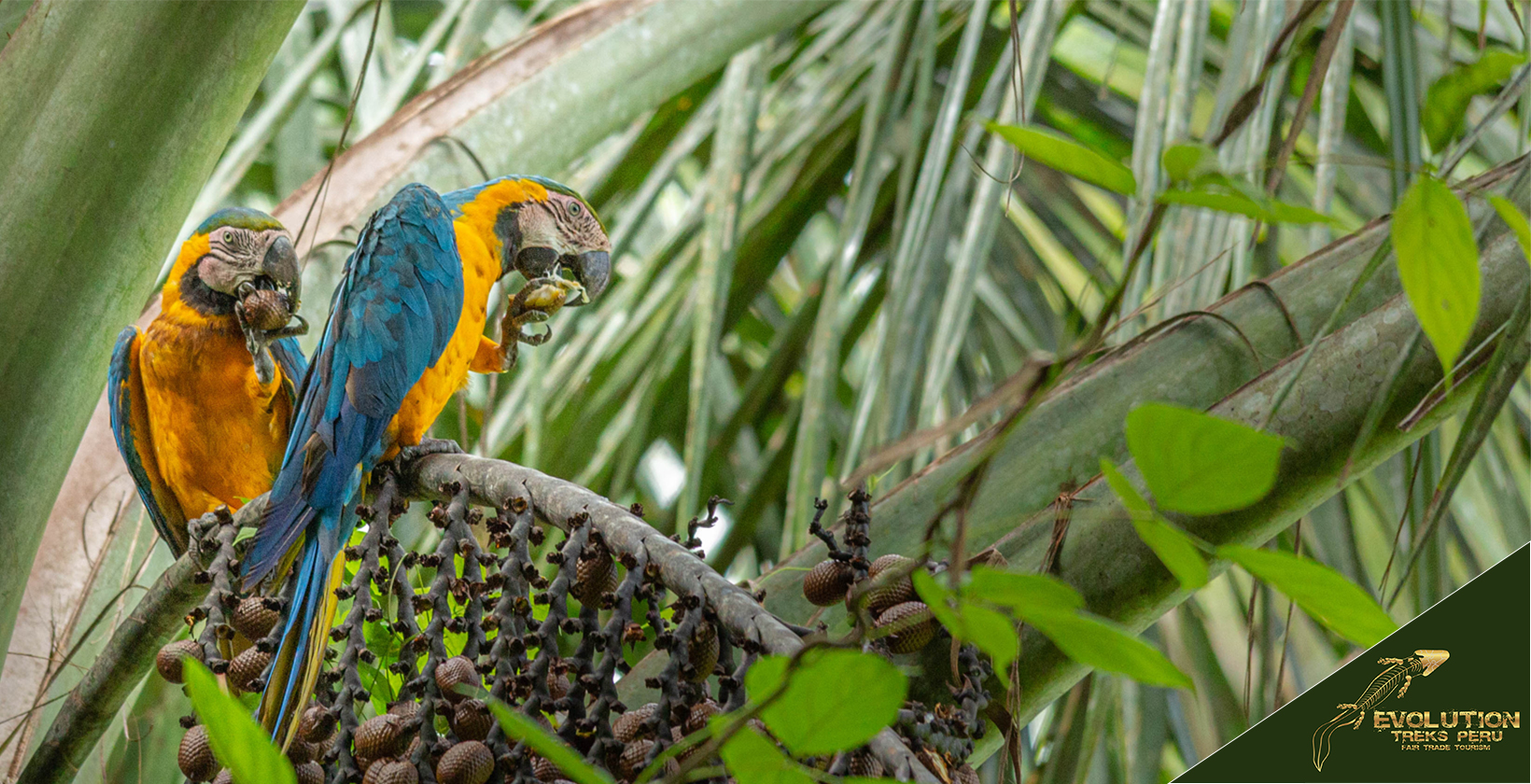
What is the contribution of Manu National Park to the Tourism in Peru?
The Manu National Park contributes largely to Tourism in Peru. It is known as one of the world’s protected and preserved areas that is rich with a haven of terrestrial biodiversity. There is an average of 2,500 tourists visiting the site.
The tourism sector of Peru makes up 3.9% of the total GDP. The 3.9% leads to the generation of 1.4 million indirect and direct employment. It represents 7.9% of economically active individuals. The site intends to promote the protection of the diverse and distinct collection of flora and fauna. The UNESCO declared the area of Manu as a World Biosphere Reserve.
The Biosphere reserve is divided into three zones. The zones are Manu National Park, Reserved Zone, and Cultural Zone. Manu National Park houses natural flora and fauna. The government and its people intend to protect and maintain the natural and distinct characteristics of the site.
The Manu Reserved Zone is a zone intended for research and tourism. The area showcases the magnificent beauty of the park. The Manu Cultural Zone is an area for the settlement of indigenous communities. The division of the area is to properly protect and preserve resources.
The conservation efforts maintain the life of every species in the park. The various tourism programs are aimed at ecotourism and the awareness of the public of the area. The area also protects the indigenous settlers of the park. The indigenous settlers mostly hunt and farm the area for their subsistence.
How does the Map of Manu National Park look?
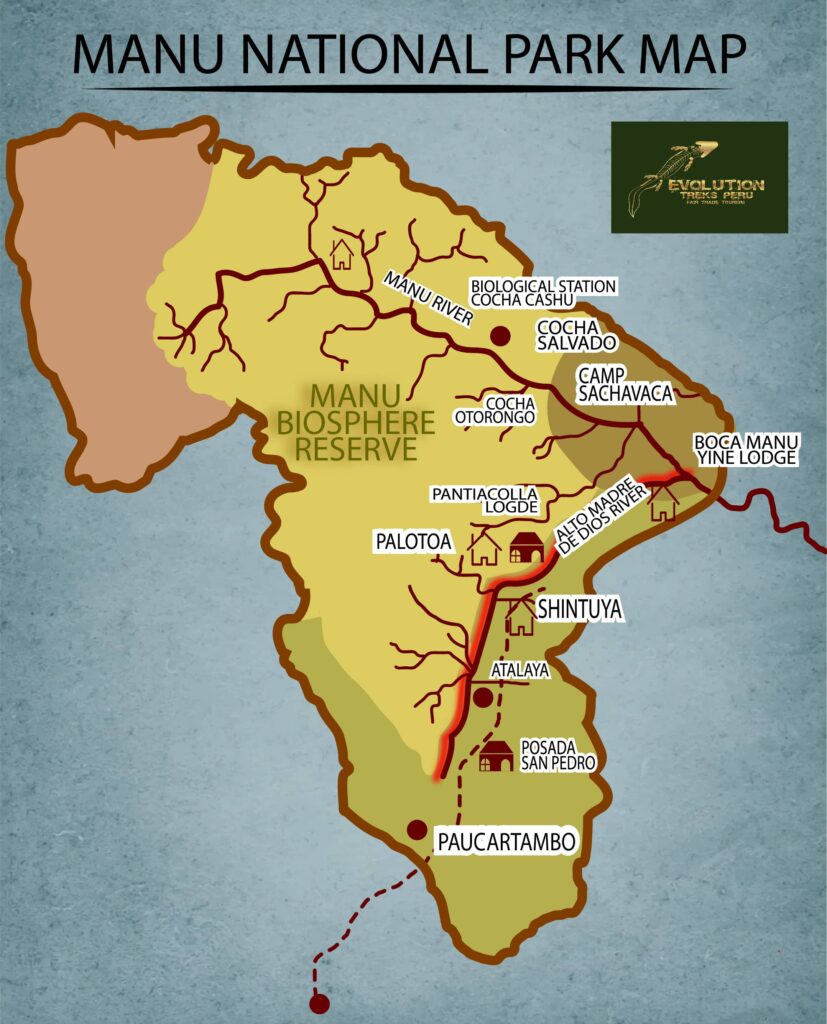
What animals live in Manu National Park?
There are 3,971 kinds of animals in Manu National Park. There are 2,300 types of insects, 1,000 types of birds, 222 kinds of mammals, and 210 types of fish. It includes 140 kinds of amphibians and 99 types of reptiles. There are still species that remain unnamed in the park. The animals around Manu National Park are jaguars, macaws, puma, and ocelots.
It includes the gigantic otters, anteaters, and armadillo. Unique animals lived in the jungles of the area, namely the marsh deer, Brazilian tapir, various species of sloths, and a wide variety of monkeys. The monkeys are the most common attractions in the area. There are a variety of black spider monkeys, woolly monkeys, and red howler monkeys. Visitors can expect to witness multiple types of bird attractions. There are different types of butterflies flying around the rainforest.
What are the most popular animals in Manu National Park?
There are five most popular animals in Manu National Park. The popular animals are the River Wolf, Ronsoco, Agamia Agami, Ara Ararauna, and Black Cachama. The River Wolf is the name given to the giant river otter. The animal lives in the freshwaters of the park. The animals were due to extinction since many people commercialized their skin.
The Ronsoco is an animal that eats grasses and aquatic plants. Capybara is the other name for the animal. The meaning of the name of the animal is water pig. It is said to be the largest rodent in the world. The Agamia Agami is an enormous bird popular in South, America.
The animals are threatened in its home because of the destruction of their natural habitat. The Ara Ararauna is famous for its long tail. The tail of the animal reaches up to 86 cm in length. The Black Cachama or the Black Macaw is the most exquisite fish in Peruvian food. The migratory fish can reach up to 35 kg.
Is Manu National Park included in the Amazon?
Yes, Manu National Park is included in the Amazon. The park holds the richest collections of animal and plant life in the Amazon Rainforest. There are several species of animals that only Manu National Park contains.
There are Capybaras, which are said to be the largest rodent in the world. It is the home of the feline species of the jaguar, ocelot, and puma. It is the paradise of diverse and colorful Macaw. It is the area of primate species of black spider monkey, red howler monkey, woolly monkey, and Capuchin. It is the home to the known poison frog.
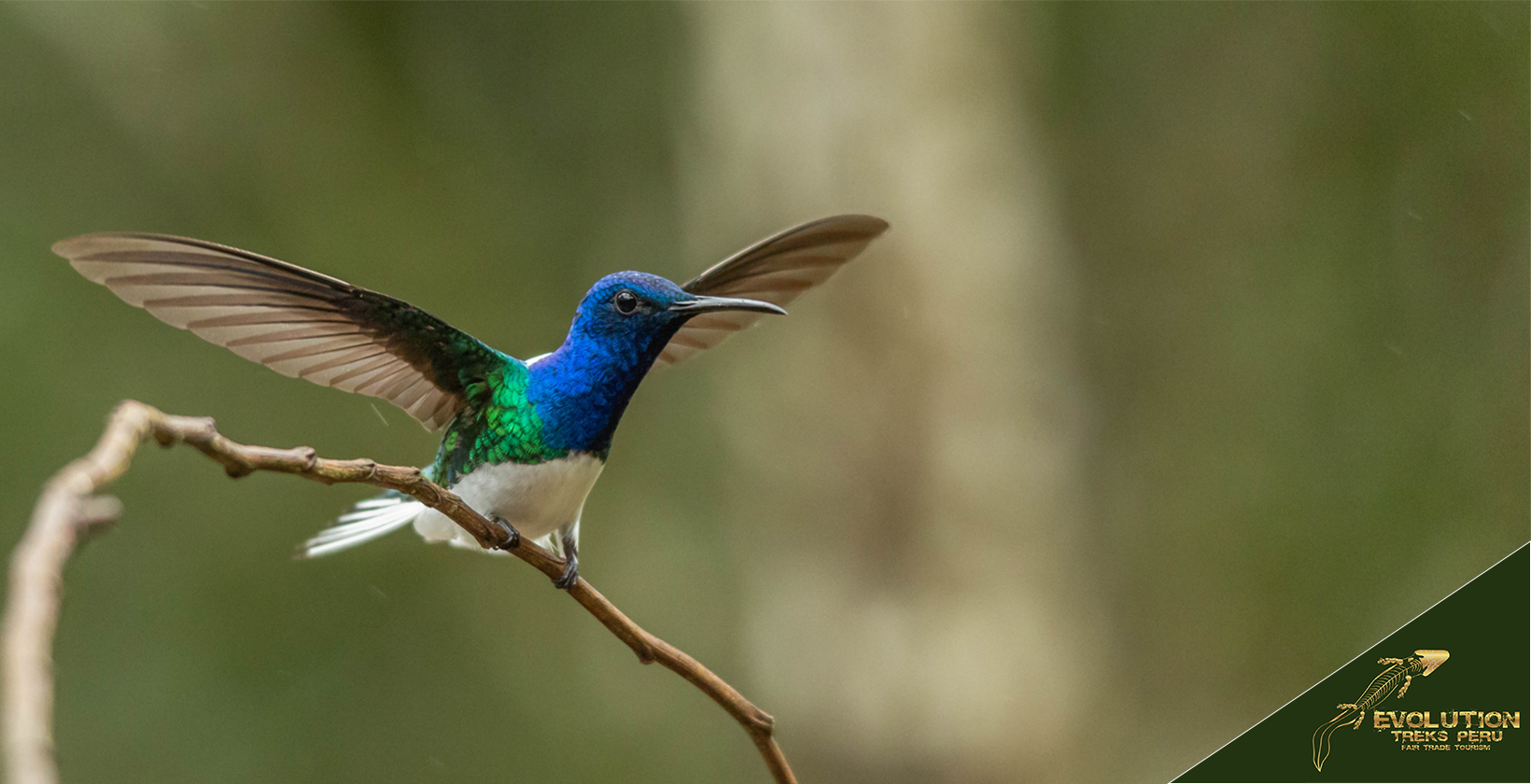
Is Manu National Park in UNESCO World Heritage Sites?
Yes, Manu National Park is in UNESCO World Heritage Site. The park was hailed as one of the World Heritage Sites on May 20, 1973. Five years before its declaration as a World Heritage, the area was a National Reserve. It was declared by UNESCO World Heritage since it is a core zone of the large biosphere reserve.
The park is 1.7 million hectares that hold 25,000 different kinds of species. It contains the richest collections of plants and animals which should be protected. It houses a thousand types of animals that are unique and distinct around the world. The preservation efforts are intended to protect and conserve the life within the park.
How was the transportation to Manu National Park?
The Manu National Park can be accessed through the road from Cusco. Cusco is the city near the area where it houses the powerful Inca Empire. The historical road of Cusco can be used to access the park within 26 to 28 hours of travel time. A 10 to 12 hours journey starts at the City of Cusco to Shintuya. A bus ride can be used to travel from the city to the village. Traverse the Boca Manu for 8 hours by boat ride. Another 8 hours are spent from Boca Manu to enter the “reserved zone” of the park.
Does Manu National Park have a No-fly Zone?
Yes, the Manu National Park has a No-fly Zone. The area is protected by the government since it is one of the UNESCO World Heritage zone. According to the records revealed by the Peruvian government in 2013, a gas company has been flying over the park. The recorded flight happened in the year 2012. The flight over the park was not part of the flight proposal of the company. The group should have followed the allowed areas and should not go around the protected areas of Peru.
Is Manu National Park under danger?
Yes, the Manu National Park is under danger. The area has active threats of roads, gas leaks, oil spillage, illegal mining, illegal logging, human safaris, and illegal drug cultivation. The area has threats about roads being cleared on the right side of the buffer zone of the park.
The government has plans to establish a road within the park. It is planned to be situated at the center of the park. The road establishment and clearing provoked several concerns from the indigenous people, the Peruvian government, and UNESCO. The road is said to relate to the illegal interest made in mining and logging around the park. Gas leaks and oil spillage have been a continuous threat around the area. The oil and gas companies operating near the park are a threat to the protected area of Manu. Illegal mining is active in the Southern area of the Amazon.
Goldmining has destroyed moreover 150,000 hectares. Goldmining activities involve dumping mercury into the river, which causes severe area contamination. Illegal logging is prominent in the Eastern part of the park. Deforestation is extreme in the area of Manu. The reports said the park has more forest cleared than other national parks in Peru.
It has an estimation of 583 hectares cleared around the Manu National Park. Human safaris are present within the left area near Madre de Dios river. The isolated indigenous individuals are in danger of diseases that can easily be transmitted to them. Protecting the indigenous community and its area is important to the people of Peru. There has been said that there is illegal drug cultivation around the park. There have been maceration pits discovered by the government.
Is Manu National Park floated in the past?
No, Manu National Park has not floated in the past. The 1,881,200 hectares are a paradise of terrestrial biodiversity. It has a complex composition of mosaic of habitats and niches. The place has an extreme variety of altitude, microclimate, soils, and other ecological conditions. It has one of the most impressive biodiversity in the world. It is home to 850 distinct and various types of flora and fauna. Its location is known as the meeting point of the Tropical Andes and the Amazon Basin.
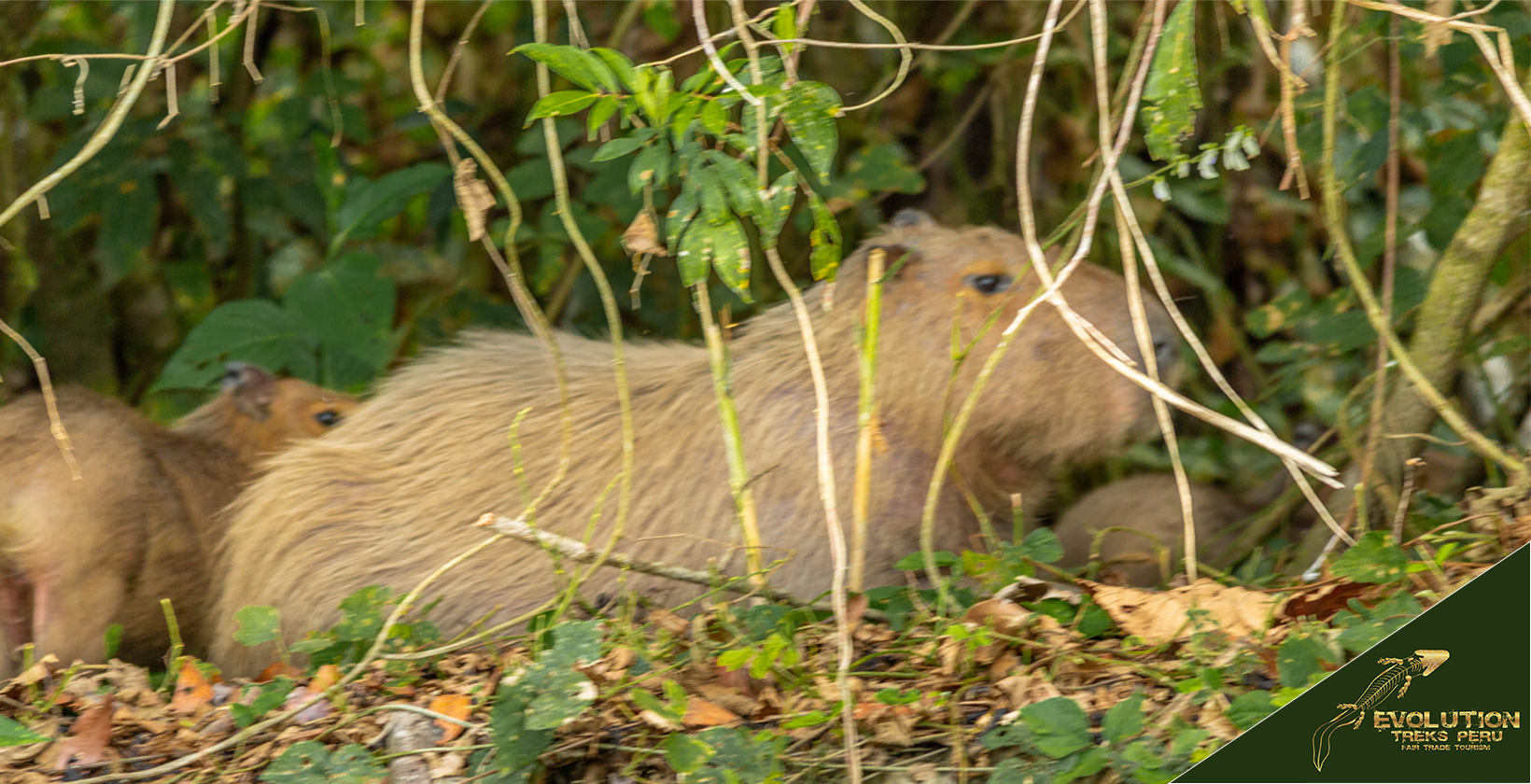
How many Artifacts do exist in Manu National Park?
There are various fauna and flora present in the area. There is an existing variety of fauna, namely 222 species of mammals and 1,005 types of birds. Some recorded data are 12 species of opossums, 1 shrew opossum, 2 armadillos, 5 sloths and anteaters, 92 bats, and 14 primates. It includes 21 carnivores, 1 tapir, 7 even-toed ungulates, 58 rodents, and 1 rabbit. There are recorded 13 types of monkeys, 68 types of reptiles, and 77 types of amphibians. There are 1,005 species of birds, which is part of 25% of the world’s population. Some types of birds are macaws, eagles, falcons, and Ara ararauna.
What are the movies about Manu National Park?
Listed below are the movies about Manu National Park:
- Spirits of the Rainforest (1994): A documentary film taken in the remote areas of the Amazon. The film follows stories about the discoveries made by the scientists in the park. It shows the beauty of the rainforest and the life of the tribes around the area.
- The Spirit Hunters (1994): It is a movie about the experiences of an American anthropologist in the Manu National Park. The anthropologist shares life with Machiguenga Indians. The Machiguenga has a shared history with the Inca Empire.
- The Living Edens: Manu: Peru’s Hidden Rain Forest (1997): A TV program aired in the year 1997. The program reveals the secrets of the park. It shows the different species of wildlife in the Amazon. It presents the river, flora and fauna of the park.
Who are the famous people visited Manu National Park?
Listed below are the famous people who visited Manu National Park.
- Glenn Shepard Jr: Shepard is an ethnobotanist, filmmaker, and ethnology curator who works within the Manu National Park. Shepard discovered multiple ethnicities residing within the area. The discoveries made are published in a film entitled “The Spirit Hunters” and “Spirits of the Rainforest”.
- Charles Goodyear: Goodyear is a chemist and manufacturing engineer. Goodyear pioneered the discovery of rubber from a rubber tree. The scientist was able to formulate heated rubber sap and sulfur to create a commercially viable rubber. Its creation prompted the demand for rubber trees.
- Carlos Fitzgerald: Fitzgerald prompted the trade of rubber trees in Manu. Fitzgerald is a son of an immigrant from Peru. He initiated most rubber trades in Peru. The trade created Fitzgerald’s initiative to create a division which is now called the “Fitzgerald pass”.
Charlie Hamilton James: James is an English photographer, cameraman, and television presenter. The photographer specialized in issues on the conservation of wildlife. The photographs made by James capture the life and animals around the park for the awareness of the public. It aims to help the preservation efforts of the Peruvian government and other international organizations.

Miguel is a professional tour guide from Cusco, Peru, with almost 20 years of experience leading tours and a deep knowledge of Peru’s cultural and ecological diversity. He is also an advocate of ecotourism and cultural sensitivity and has lectured on these topics in the US and Europe. He co-founded Evolution Treks Peru, a worker-owned travel company based in Cusco.

